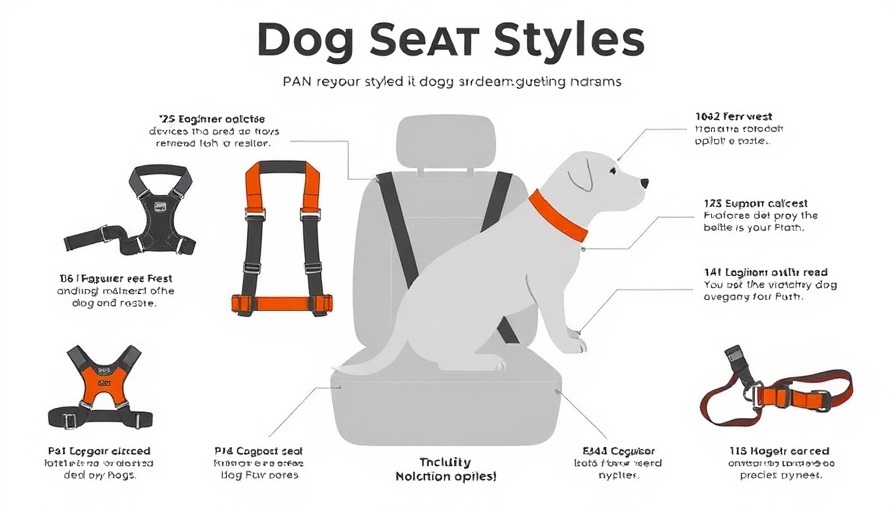
The Importance of Dog Safety Seat Belts
Car accidents injure over 100,000 pets annually in the United States, according to recent statistics. While these numbers are alarmingly high, most injuries can be prevented by properly restraining our furry companions during car rides. Dog owners must prioritize pet safety as they would for any member of the family. A quality dog safety seat belt not only protects your pet from harm during emergency situations but also lessens distractions while driving, ultimately safeguarding all occupants in the vehicle.
Types of Dog Safety Seat Belts
When considering the best dog seat belt options, various designs cater to different needs and situations. The most common categories include harness-style, vest-style, and tether-style seat belts. Each of these offers unique benefits and challenges, so understanding their differences helps pet owners make informed decisions.
Harness-Style Seat Belts: Maximum Protection
Harness-style seat belts are known for their superior protection. They secure dogs without restricting their natural movement and have been proven to distribute crash forces across the chest and shoulders effectively. According to the Center for Pet Safety, this design tends to outperform other restraint types in crash tests. Models like Sleepypod Clickit Sport harness excel in safety ratings, making them a worthy investment for pet owners seeking reliable safety solutions.
Vest-Style Options for Smaller Dogs
Vest-style seat belts are designed primarily for smaller dogs, offering extra padded support that wraps around the dog’s torso. These models attach easily to standard seat belts. While they provide comfort, it is essential for owners to know that vest designs exhibit higher failure rates in independent testing compared to harness systems. Experts recommend these restraints for smaller dogs who may struggle with traditional harnesses or display anxiety.
The Risks of Tether-Style Systems
Tether-style seat belts, on the other hand, connect directly to an existing harness via a short strap. While less expensive, these systems offer limited crash protection, as they might enable excessive movement during an impact, which can result in injury. The Center for Pet Safety advises using tethers only for short trips when no other options are available. Understanding the limitations of each design enables pet owners to choose the most appropriate restraint for their dogs.
Safety Standards and Certifications
The safety of dog seat belts is not governed by a set of federal regulations, leading to potential misrepresentations by manufacturers. The only organization currently conducting rigorous crash test evaluations of pet restraints is the Center for Pet Safety (CPS), which employs stringent standards that assess products against actual automotive safety criteria. Pet owners must prioritize purchasing products from brands that meet these safety certifications. By ensuring a harness has passed CPS tests, owners take an essential step in protecting their pets.
Making the Right Choice: What Really Matters
When picking a dog safety seat belt, fit is critical. A snug fit ensures the harness works effectively, preventing your dog from slipping out during sudden stops. Remember the “two-finger rule” for harness fit: you should be able to fit two fingers comfortably between the harness and your dog's body. If your pet falls between sizes, opting for a larger size can help to accommodate adjustments.
Actionable Insights for Pet Owners
As a pet owner, it’s crucial to not only select a highly rated crash-tested seat belt but also to familiarize your dog with the new restraint before hitting the road. Gradually increasing their time in the harness while rewarding them with treats can help them adjust more comfortably to car rides. Ultimately, ensuring your dog’s safety and comfort while traveling relies on the right choice of seat belt combined with proper acclimatization.
Final Thoughts
Investing in a high-quality dog safety seat belt is an invaluable decision that protects both your pet and your family while on the road. With considerations ranging from safety standards to design functionality, understanding available options is vital. Remember, proper restraints can mean the difference between a safe trip and a potentially tragic accident. Equip your dog with the safety they deserve and enjoy your journeys together.
 Add Row
Add Row  Add
Add 




Write A Comment